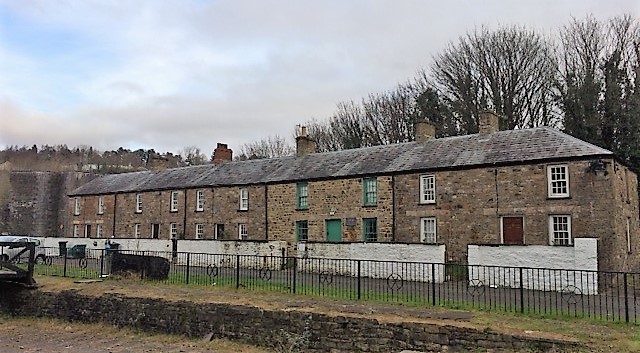What is a “Period” House?
It’s a term that’s used a lot, especially when describing large, aspirational properties or beautiful interiors. But, like so much jargon, what does it actually mean when a house is described as “period”, and more importantly, how many of us actually consider that we live in a “period” home?
This is something that we have been thinking about here at Jones Battye, especially in terms of our own clients and the types and styles of houses that we encounter on a daily basis. Hopefully, this blog will clarify the issue, but it may also create more questions than answers, and it would be great to hear your thoughts on the subject.
My trusty ‘Concise Oxford Dictionary’ defines “period” as a ‘distinct portion of history…… (Esp. of furniture, dress and architecture) belonging to or characteristic of a particular (past) period’. That sounds reasonably straight-forward, but obviously all buildings belong to a particular time and to the general architectural style of when they were built, but would anyone describe a house built in the Noughties as a “period” home? And if we describe Georgian, Victorian and Edwardian houses as “period”, would we consider 1930 semi’s or modernist 1960’s housing estates to be included in the category?
The general consensus seems to be that the definition refers to buildings that pre-date the first world war, which handily at the moment can be thought of as anything more than 100 years old.
With that definition in mind, here is a (very!) brief guide to 3 key periods that we encounter most often in South Wales – perhaps your home fits one of these categories?
Georgian
The Georgian period lasted from 1714 to 1830 and encapsulated the reign of 4 King Georges. During that time there were a number of different styles including Regency and Palladian. However, the main defining features of Georgian architecture are symmetry and simple elegance. In South Wales, Georgian architecture is best seen in the seaside towns and fishing villages like Tenby and Aberaeron, as well as the regional centres such as Brecon, Monmouth and Swansea.
It is also evident in the early industrial towns and villages located along the Heads of the Valleys such as Blaenavon, Aberdare and Merthyr Tydfil. This is where the first iron workers cottages were built around 1790 -1820 with typical low profile, double fronted appearance and front gardens.
Victorian
Queen Victoria’s reign lasted from 1837 to 1901 and a variety of domestic architectural styles are ‘Victorian’ including the tail-end of Georgian style right through to the beginning of the Arts and Crafts Movement.
It was also a time of great change particularly in the iron, coal and steel Valleys of South Wales and the great industrial capitals – Cardiff, Newport and Swansea. A rapidly increasing population, and great wealth creation saw house building on an unprecedented scale. Homes of the period include the archetypal coal miner’s terraces of the Valleys, the grand Gothic revival terraces of Pontcanna and large detached houses of Llandaff.
Edwardian / Pre WW1 Era
The Edwardian period was relatively short compared to the long reign of Victoria. However, it is notable for the continued evolution of several architectural styles and urban planning ideas such as the Arts and Crafts Movement and Garden Village estates. The ideals of the Arts and Crafts Movement can be seen clearly in Rhiwbina’s Garden Village which began in 1913 with the objective of providing modern houses in pleasant and healthy surroundings.
Urban building also continued a pace during the early part of the 20th century in the later industrialised valleys such as the Rhondda, and the expanding suburbs of Cardiff. Edwardian miner’s terraces may appear at first to be very similar in style to earlier Victorian versions. However, they are generally constructed of solid brick rather than stone and unlike earlier homes, were often built with a double storey annex incorporating a ‘proper’ kitchen, coal shed and attached outside toilet.
And all that even before we get to Art Deco and the Mock Tudor obsession of the inter-war years, which in our opinion could definitely be candidates for inclusion in the Period Property Club.
But do you agree? Perhaps, more homes qualify for the title than you might imagine, or, you may think that it’s a nonsensical word used by estate agents and glossy magazines. Maybe you think that it is important that a “period” property has retained most of its original features. Whatever your take on it, we would love to know your thoughts!








